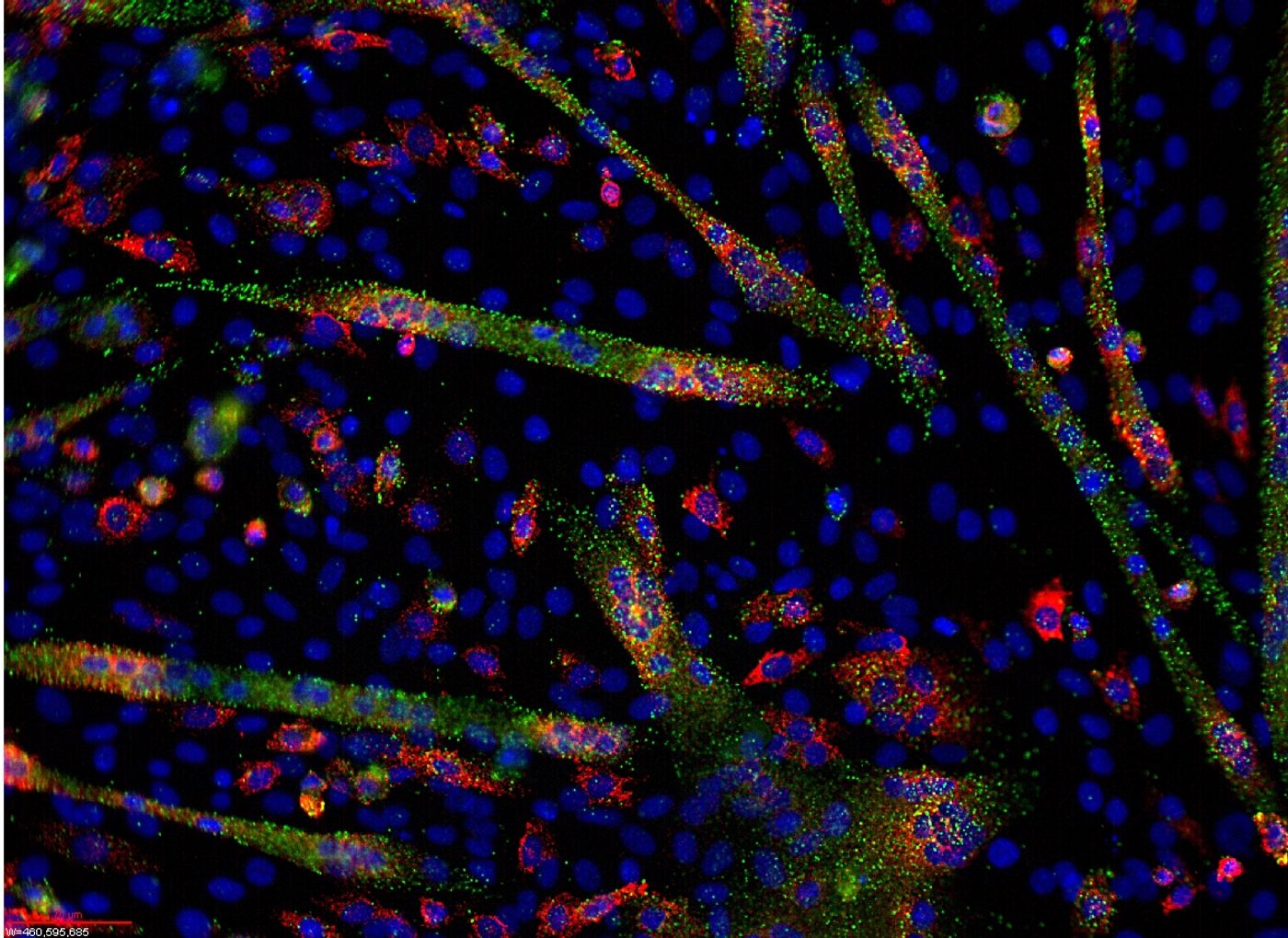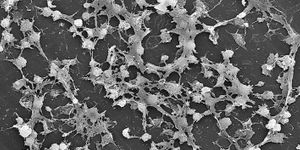Reporting in Nature Medicine, scientists at St. Jude Children's Research Hospital have determined that a small piece of RNA, a microRNA, could be critical to maintaining the proper function of brain circuitry that is associated with the ‘voices’ and other hallucinations that plague those suffering from schizophrenia. This microRNA may provide a basis for the creation of novel antipsychotic drugs.
According to the National Institute of Mental Health, schizophrenia may cause people to feel they have lost touch with reality, and can affect the way a person feels, how they behave and what they think. While not as common as many other psychiatric disorders, it can be debilitating. The short video above explains more about schizophrenia.
Genes can be regulated by over 2,000 microRNAs that therefore can manipulate the corresponding protein levels in cells. A mouse model enabled the researchers to determine that a microRNA called miR-338-3pi regulates the levels of the D2 dopamine receptor (Drd2), which is also the primary target of antipsychotic drugs.
"In 2014, we identified the specific circuit in the brain that is targeted by antipsychotic drugs. However, the existing antipsychotics also cause devastating side effects," explained the corresponding author of the report, Stanislav Zakharenko, M.D., Ph.D., a member of the St. Jude Department of Developmental Neurobiology. "In this study, we identified the microRNA that is a key player in disruption of that circuit and showed that depletion of the microRNA was necessary and sufficient to inhibit normal functioning of the circuit in the mouse models.
"We also found evidence suggesting that the microRNA, named miR-338-3p, could be targeted for development of a new class of antipsychotic drugs with fewer side effects."
This work utilized a mouse model of 22q11 syndrome, in which a genetic deletion in chromosome 22 occurs. Human patients with the deletion are missing the second copy of over 25 genes from that region. One of those genes, Dgcr8, helps produce microRNAs. Patients are at risk for behavioral problems when they are young, and between 23 and 44 percent develop schizophrenia. You can view a talk from MIT about mouse genetic models of schizophrenia
here.
Adding to previous research, the new data from the mouse model provides new insight into the molecular mechanisms that impairs the brain circuit and interrupts signals moving along a neural connection where two regions of the brain meet. Those brain regions are involved in the processing of auditory information.
Using the mice, the investigators have correlated the 22q11 deletion syndrome and loss of one copy of Dgcr8 with age-related loss of miR-338-3p in the auditory thalamus. Along with the loss of the microRNA, increases in Drd2 and increased activity in a circuit linking the auditory cortex and thalamus were observed. That circuit is associated with auditory hallucinations.
The loss of miR-338-3p does not seem to affect other brain circuitry in the mutant mice. In fact, the level of miR-338-3p was higher in the thalamus than most other regions. Adding miR-338-3p to the auditory thalamus of the mice rescued the circuit dysfunction, and reduced Drd2 levels. Antipsychotic drugs targeting Drd2 were also able to restore normal activity to the circuit.
This work provides new clues into the mechanism of age-related delay of schizophrenia onset. The researchers noted that while microRNA levels decline in mice as they age, mutant mice started off with lower miR-338-3p levels.
"A minimum level of the microRNA may be necessary to prevent excessive production of the Drd2 that disrupts the circuit," Zakharenko said. "While miR-338-3p levels decline as normal mice age, levels may remain above the threshold necessary to prevent overexpression of the protein. In contrast, the deletion syndrome may leave mice at risk for dropping below that threshold."
If you would like to know more about microRNAs, check out the video above with David Bartel, a Howard Hughes Medical Investigator at the Whitehead Institute of MIT.
Sources:
NIMH,
MIT,
Current Psychiatry Reports,
AAAS/Eurekalert! via
St. Jude Research,
Nature Medicine









